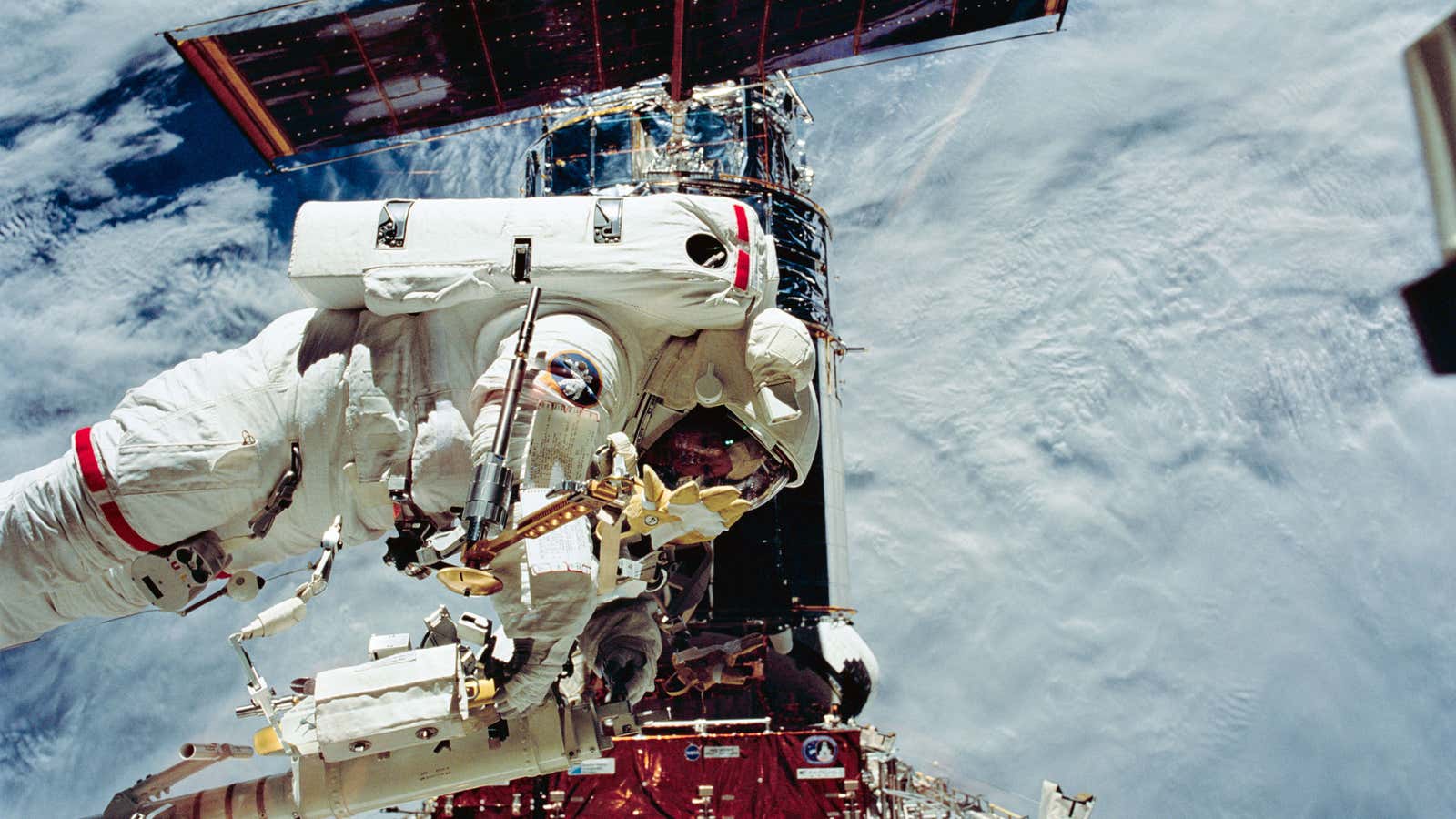Here on Earth, we don’t really think about our waste because it’s (usually) out of sight and out of mind. But in space, managing waste is a little trickier. NASA engineers have come up with spaceship toilets that use suction (the waste is later released from the ship and catches on fire in our atmosphere, shooting-star style), and when astronauts go on missions where they have to be in their spacesuits between eight and 12 hours, they use adult diapers.
But as NASA gears up to send astronauts deeper into space, they need to prepare to keep them—and their waste—safe for days on end in case the ship malfunctions far from home and they’re forced to rely on their suits’ life support systems. NASA partnered with HeroX, a crowdsourcing company, to launch the Space Poop Challenge, which allowed anyone to submit designs for a discrete device that could store urine, fecal matter, and menstrual blood within a spacesuit for up to $30,000 in prize money. Before the proposal window closed on Dec. 20, 2016, they had amassed 5,000 proposals, coming in from every continent (including Antarctica).
On Feb. 15, the highly-anticipated winners were announced.
In first place was a design by Air Force officer and surgeon Thatcher Cardon, who thought up a compartment that would fit at the bottom of the spacesuit with a tiny hole allowing astronauts to insert and remove expandable diapers and underwear.
He took his inspiration from minimally invasive surgeries. “[Doctors] can do some amazing things in very small openings,” Cardon told NPR. “They can even replace heart valves now through catheters in an artery.” Poop, he concluded, should be small potatoes by comparison. Cardon won $15,000 in prize money.
In the second place design, waste is shuttled away to an external compartment using air flow generated by the astronaut’s movement. In third place was something called a SWIMsuit, which sanitizes and absorbs waste. Winners were awarded $10,000 and $5,000 respectively.
NASA has yet to test the winning designs, though ideally they’d never be used on an actual mission: Extended periods outside of the ship would likely only occur in an emergency far away from Earth. But, future astronauts will at least have the peace of mind that if they are stuck in space for a while, they won’t be totally SOL.
